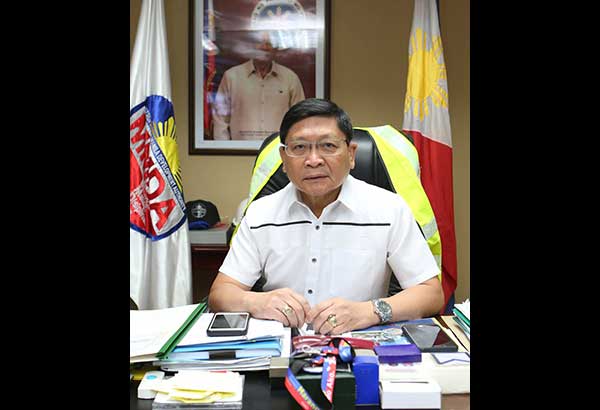Is traffic in Metro Manila solvable?

MMDA Chairman Danilo Lim.
MANILA, Philippines — The traffic problem in the metropolis has been there for more than four decades. The number of vehicles has significantly increased, but the roads do not get any wider, the Metropolitan Manila Development Authority (MMDA) said.
MMDA Chairman Danilo Lim said that the Philippines recorded around 417,000 new vehicles in 2016, of which 30 to 35 percent are in Metro Manila. Before the year ends, the volume of vehicles is expected to increase to up to 450,000.
Is traffic in Metro Manila solvable?
“Our traffic problem, of course, it is solvable. We cannot just give up on this. This is a man-made problem, so it can be fixed. But we have to remember that we have had this traffic mess for more than 40 years,” Lim told STARweek. “So it will take some time to really fix it.”
To resolve the traffic problem, Lim said he would need good urban planning and zoning in Metro Manila and the nearby regions, and putting up infrastructure which will be good for 30 to 50 years.
In fact, he noted that the Philippines is far behind its neighbors in Asia as far as infrastructure and road networks are concerned.
But Lim remains optimistic as he believes that there are immediate or stop-gap solutions to the traffic problem: instilling a culture of discipline, curbing corrupt practices and religiously implementing existing traffic measures.
As far as discipline is concerned, Lim said that training motorists and commuters to obey the traffic rules and regulations would bring about order in the streets.
He also emphasized that curbing corrupt practices of some traffic enforcers and officials of the MMDA will also ease the traffic bottleneck.
“Corruption makes it worse because some of our traffic enforcers can be bribed and they tolerate erring motorists who violate our traffic rules,” he said. “So I have to do a lot of cleansing not only internal, but also outside the MMDA.”
Since taking office last May, Lim has fired more than 40 erring traffic enforcers for blatantly violating traffic rules and allegedly receiving money from motorists in exchange for not ticketing their traffic violations.
To address the problem, the MMDA has designated intelligence personnel to monitor the activities of the traffic enforcers and other officials of the agency.
Lim closed down over 10 bus terminals under the Business Permits and Licensing Office (BPLO) in Pasay and Quezon City for not complying with the agency’s “nose-in, nose-out” policy and for operating without business permits.
There are 45 to 48 provincial bus terminals on EDSA alone, according to Lim.
In the “nose-in, nose-out” policy, bus drivers must go in and out of terminals with their vehicle’s front end first, and are not allowed to maneuver outside of the terminal.
Private cars and other public utility vehicles are in turn prohibited from loading and unloading passengers in front of bus terminals.
Lim said they are looking into opening more provincial bus terminals outside EDSA. Commuters coming from south-west are now taking the HK Plaza terminal in Pasay City. For those coming from the east, the Metro Manila Eastern Multi-Modal Transport Terminal has opened in Marikina City.
Lim added that the Department of Transportation has approved and identified a 10-hectare land in Sta. Rosa, Laguna that will serve as provincial terminal for commuters coming from the south.
The government is now looking for a location for provincial buses coming from the north.
Despite these measures, Lim believes it will take some time before traffic is solved. And some long-term solutions have to be implemented.
Lim also revealed the government is studying tapping local government units in the neighboring regions in Metro Manila to help resolve the traffic problem.
He said the Metro Manila is so congested there is a need to develop cities outside the capital.
“We are thinking of Mega Manila instead of Metro Manila, the nearby cities in the metropolis will now be part of the solution. Ibig sabihin, hindi na dito lahat, magkakaroon ka na ng mga (That means it won’t all be here, there will be) activities outside Metro Manila,” he said.
Lim appealed to motorists to follow traffic rules as a way of helping the government in solving the traffic problem.
Aware of the challenges in looking for traffic solutions, Lim said that he nevertheless accepted the job “to serve the country and to let the people see meaningful change.”
- Latest
- Trending













